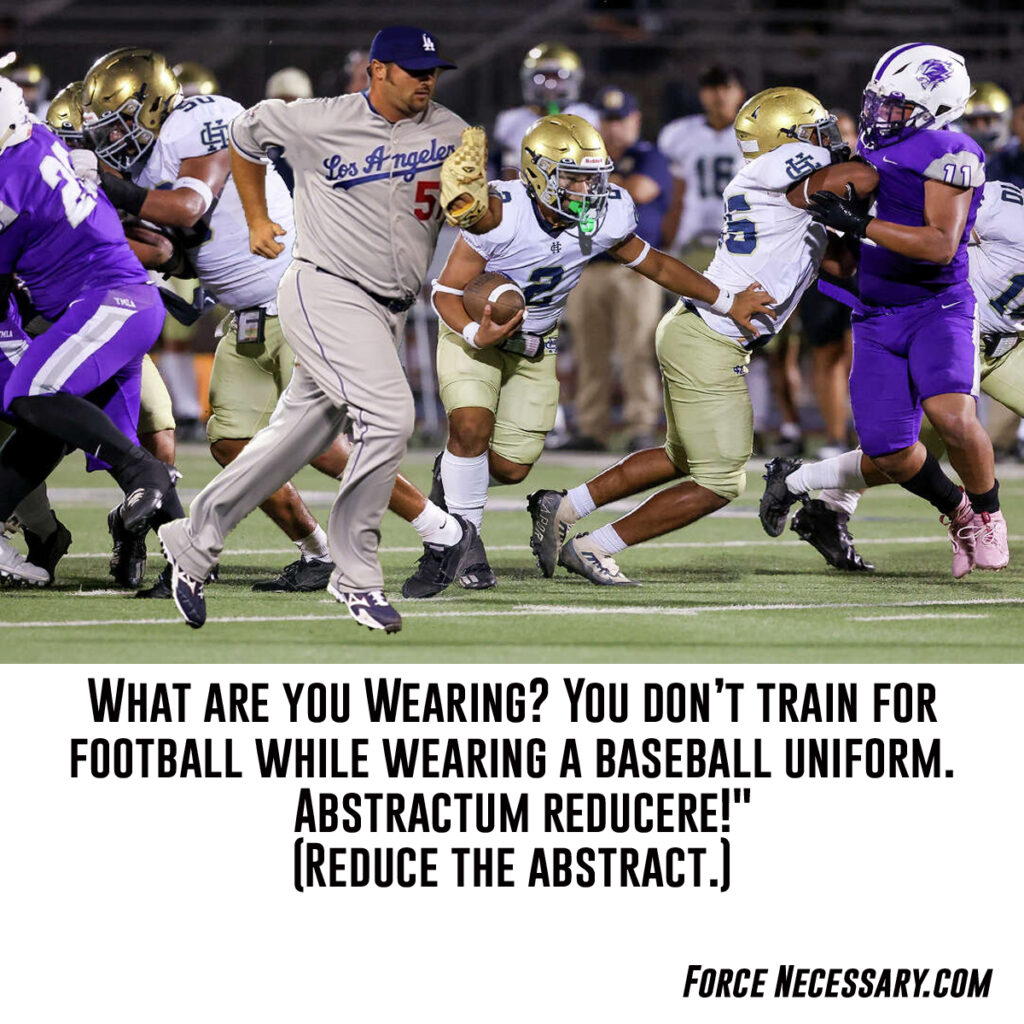



Can They Sue You? Can They Sue Each Other?
Assumption of Risk In Martial Arts Schools…
(The raw law on the “Assumption of Risk” has been a legal throwdown on many martial waivers. Is on mine. The standard is – “Assumption of risk is a legal doctrine that describes when someone chooses to participate in a risky activity and accepts the potential consequences. It’s a defense that can be used to reduce or bar a plaintiff’s ability to recover damages from a defendant. It’s a legal doctrine that describes when someone chooses to participate in a risky activity and accepts the potential consequences. It’s a defense that can be used to reduce or bar a plaintiff’s ability to recover damages from a defendant.” Of course, the legal system, ever prone to split hairs to the nth degree, shreds hairs into invisibility. -Hock)
Article by Attorney By Noah Nunberg
“Courts will apply the principle of “assumption of risk” in analyzing whether a persons involved in karate training are negligently liable in causing injury to others in supervising his students. This concept was well explained in the New York case of Beck v. Scimeca (Hwrang-Do Center), 90 N.Y.2d 471 (1997). The court explained that when a person engages in a sport or recreational activity, he consents to those commonly appreciated risks which are inherent in and arise out of the nature of the sport generally and flow from such participation.
For example, the court observed that one is legally deemed to accept responsibility to being hit by a ball in a baseball game or being bumped in a horse race. In each situation, the law will consider the degree of risks the plaintiff assumed when he elected to participate in the activity. The courts will not examine this in a vacuum. The assessment is made against the background of the skill and experience of the participant.
In Scimeca, a 30 year old orange belt student sued his instructor for compelling him to attempt a “jump roll” technique. There a 15 year old brown belt took over the class and directed the older orange belt, who had been training for 15 months, to jump over a high barrier. While the student had performed the technique before, the obstacle the student had to jump over was raised higher than he had previously attempted, and the student sustained severe spinal injuries in his failed attempt.
The court held that the student had assumed the risk of attempting such new techniques, which were calculated to advance his level of ability. The court examined whether the instructor created dangerous conditions which were over and above the usual dangers inherent in the martial arts class. The court also made clear that to assume the risk the participant must not only have knowledge of the injury causing activity, but also an appreciation of the risk involved. There, since the student had participated in this training technique before and he appreciated the inherent risks, there was no negligence.
The court distinguished other cases involving sparring activities, which appear to place a higher degree of responsibility upon the instructor. For example, in Deangelis v. Izzo, 192 A.D.2d 823 (3d Dep’t 1993), a beginning karate student sued the owner of the school as a result of sustaining a serious head injury while sparring with another beginner.
The court refused to dismiss the case based on assumption of risk there. The court noted that karate is not a commonly observed activity such as baseball or football and the dangers in karate are not at as apparent as they are with other common sports. Karate involves “specialized training” in order to make the punches, kicks and blocks effective. There, the new students had been trained in the punches and kicks, but not in blocking them.
Interestingly, the court observed correctly that placing beginners together to spar may be more dangerous than having the beginner spar with a more experienced opponent. The court found that since this fact in counterintuitive, it was not clear that the risks involved were “known, apparent or reasonably foreseeable . . . .” Therefore, the court refused to dismiss the action and held it for trial.”
Check out Hock’s TV chennel for many free one-hour training films. Click here
One of the major influences in my martial life was Ray Medina. One of my best friends Roger White and brother cop (patrol and detectives), and Roger introduced me to Ray in 1986 because he knew my personal frustrations with classic martial arts, dating back to 1972.
Ray was already a karate-kickboxing champion fighter in our region but he’d discovered the Bruce Lee world, Dan Inosanto and Paul Vunak. Jeet June Do and Filipino martial arts, Thai, Shoot, Silat and that unique street fighting that Vunak pioneered in the 1980s. Ray was traveling back and forth to then the “Mecca” – Los Angeles for all this. And was addicted to seminars.
I “hired” Ray to teach me and basically several days a week for years we’d meet. At this point money was no object. Addiction is addiction. We’d meet up and I’d ask, “What are we doing today, Ray?” And it took a while to figure it out but basically we did what HE needed to work on, not me, which meant him beating me up quite a bit, under the guise of teaching me. BUT…I learned a lot. You can still learn a lot that way and of course I got to experiment on him too. I recall that Inosanto said that he did this with Bruce Lee, and Lee would wind up beating Dan up a lot. “Basically I was Bruce’s punching bag,” Inosanto said once.
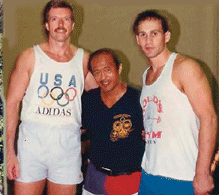
Ray and I started hosting the big names in our city. I began attending seminars with him and I quickly learned that we were both interested in visiting systems and arts, but only to learn how to beat them. We were like spies in ememy camps. Many if not most seminar (and class) attendees attend to learn those arts, embrace them, get rank, to eventually teach them. Early on I learned that our spy motive was to learn how to beat what every one else was doing, not replicate it, join it, or worship it.
True, we were both card-carrying martial addicts, but for Ray he was spying because of the fighter in him. For me, I was spying because I had to arrest people. So, we would study material with the sole purpose of beating it. Inadvertantly, we did learn other systems and arts but sort of, from this ass-backwards, spy way.
Ray eventually died of a stomach cancer. Through the years he knocked me out several times when kickboxing, but he also knocked some sense into me which was worth more that those occasional, nausea-LSD-like, TKO dreams and the occasional vomiting.
Check out all of Hock’s free training films on his TV channel, click here



A string! One great fake that opens a hole, then one stunning blow, then a tree-step combination…for starters. 5 parts of the string. 1 plus 1, plus 3.
What is string theory in simple “math” terms? Professor Google says: “Instead of treating subatomic particles as the fundamental building blocks of matter, string theory says that everything is made of unbelievably tiny strings, whose vibrations produce effects…” We here are not galactic physicists. We are knuckle draggers, trying to survive crime and war. Maybe win some trophies is the end game for some? I nickname small practice sets – “string theories.” Parts strung together. They are combat scenario preps, and we all do them but I would like here to interject the fake in as starters and some scientific ways to train them.
Tiny strings. The late, great Remy Presas said so many l times, “All you need you know, is one good fake.” He was speaking of a theory, a battle plan idea. Because we all know “all you need” in martial life is a whole lot more. Call the fake a “set-up” or whatever you please. The concept, this strategy is in all combat sports, and in many non-combat sports. For example in boxing – ” A mock blow or attack on or toward one part in order to distract attention from the point one really intends to attack. “The boxer made a feint with his right, then followed with a left hook.”

But a fake and follow-up string is especially important for self-defenders, a real priority to emphasize since they are not in the sports “duel,” the sports “spar,” the sports “grind” of controlled sports for as long as sports people are.
Think about it, a good fake is important. Good fakes…open things up. “How ‘sporty’ is your fake?” Trained fighters might see them coming and be susceptible to the real delivery steps. But, the ignorant untrained eye won’t see them coming. And I must ask, “How fast is your fake?” If your opponent is slow, a fast fake won’t get the reaction you seek, that opening . You must fake slower.
Brace yourself, fakes or no fakes, to be really thorough, first off you have to learn and improve these “first-line” physical events.
Yikes, that’s a lot of stuff! Folks can’t all be super experts in all these areas. Folks can’t all be martial full-timers, yet he path of study leads through this long way. Certainly, an expert and a serious instructor must know these things, but people with busy “lives,” all of which are 99.5% part timers, (almost all normal people with jobs, families, etc.) not full timers. But they can be taught these 3, 4, 5-part strings of combatives-self-defense early on which can be helpful. A breakdown…
1-The confrontation. The who, what, where, when, how and why a crime, a battle, or a fight started. Study the intelligence info of fights, crime and war. What are the opening ways of fights, war and crime? Why did you go there? Why are staying there. This essay is not about these “stay alert” topics – which would be a whole book but must at very least be mentioned here as number 1.
2-All basic strikes. Includes hand, stick, knife! The strike alone, in an already open path, needs no fake. But opponent reflex matters. Happens. What naturally, statistically pops open when the enemy ducks, blocks or dodges your incoming strike? In training, you can also turn a whole series in your hand strike training into a 2-step practice, even with every kick. Then a whole series on reverse, as in fake kick and go to hands. Two steps in the string right there that must be formalized as a set of practice.
3-All basic kicks. The kick alone, in an already open path, needs no fake. But opponent reflex matters. Happens. What naturally, statistically pops open when the enemy ducks, blocks or dodges an incoming kick? In kicking, a very common tactic is to hand-fake high then kick low. In training, you can turn a whole series in your kicking training into this 2-step practice, making a higher hand fake part of every kick. Then a whole series on reverse. Fake kick and hand strike. Two steps of the string right there, that must be formalized as a set of practice.
4-All basic grabs. In takedowns-throws, what are the first, basic grabs on the body that set up one up. What needs to be open for such grabs? What strikes. kicks and fake grabs open the takedown throw-grab you are hoping for? In ground captures what are the first, basic grabs on the body that set up one up. What needs to be open for the grabs? What strikes and fake grabs open the grab you are hoping for? Can’t strike in your sport? Fake grabs then. What moves can set up your selected grab? (I have a whole other long essay on grabs and fake grabs and set-up grabs.)
5- Body movements, footworks and maneuvers. Where do we need to be to fake, and be in each part of the string to best execute? Standing or ground?
6-Combinations finishers. I myself believe in 2 or 3 step combinations. At least as a foundational, study method. It might take 5 or 6 things to finish a stunned opponent, in which case, I would like to package them in as yet another 3-part combination. That is just my training strategy. Long steps, 4 or more ideas in the string don’t seem to be accomplished as planned. The opponent moves, blocks, falls, etc. changing the range and breaking the long dance.
Hand fighting, stick fighting, knife fighting, gun fighting. Sports. Arts. The art of deception. String things along for training. String Theory.
One hand example?
What series should you build against knife attacks, you armed or not armed? Sticks? Versus weapon quickdraws? I teach these hand, stick, knife (and gun concerning draw points) string lists, in an inspiration that eventually customize your own.
Yes, if you want to you turn these 5-part strings into katas. Yes. Many do. Go ahead. Katas and visualization-theory are not near the top of my list. I’d rather use and suggest gear, mook jong dummies, heavy bags, and of course the best – partners, but whatever. Doing something is better than nothing.
In sports you are filmed, and the opponents watch your favorite strings to prep. And,-or, you watch their favorite strings on films. In crime and war? Maybe not so much is available, but some things can be gleaned.
String Theory in fighting, Not too complicated! As the Rolling Stones said, “She was practiced at the art of deception. Well, I could tell by her blood-stained hands. You can’t always get what you want, But if you try sometimes well, you might find, you get what you need.”
Check out Hock free full one hour training films on his TV channel. Click here
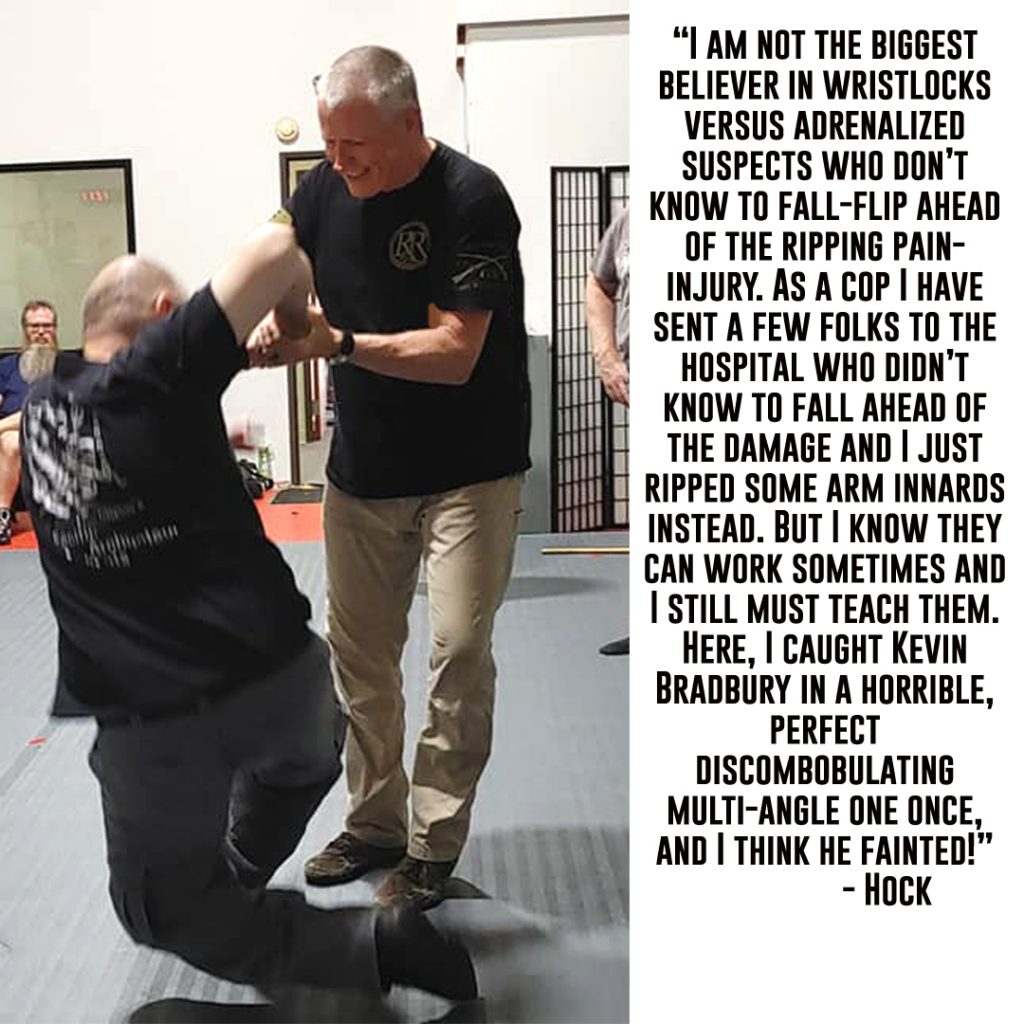

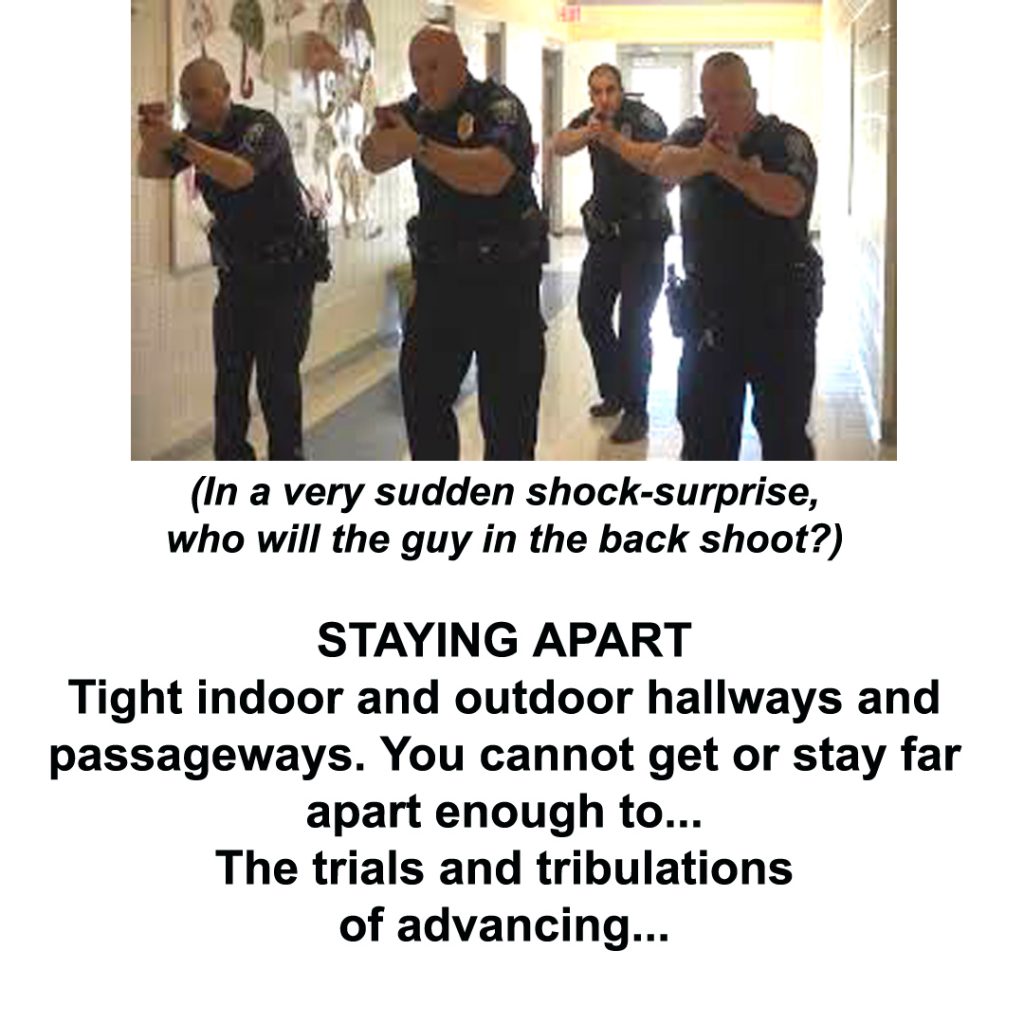

THE SACRIFICE FALL Pride before the “Fall.”
Pride before the FAIL (or Fall) – meaning “those people who are overconfident or too arrogant are likely to fail” – this quick, popular and easily understood saying is from the Bible’s Book of Proverbs, in a few varied words. But the same message. Now, I am far from a Biblical expert, but its general popularity speaks volumes. Here I would like to rotate the word “fail” to “fall,” – which so many people already do anyway. There are other related phrases to add to this subject, like “you fell prey to,” or “falling prey to,” meaning you have been misguided and “fell” for some such thing that you should not have.
I would like here to produce some ideas and regenerate some martial arts history. The subject? The so-called “sacrifice fall” or another version of the same, “sacrifice throw.” Same-same.
The word “sacrifice” pops up in many ways in old and new combatives, martial arts and combat sports:
Yes, lots of sacrifices in the martial arts and combat sports. And in this category of sacrifices includes the ubiquitous topic of “sacrifice falls” – defined as “purposely giving up, surrendering, your superior standing or knee-high position to end up fighting on the grounds and floors of the world.” I am here to report that once popular warning, is not at all as ubiquitous as it once was. And I would add, numerous popular arts and sports seek the very opposite. Entire systems now live on and for the sacrifice fall. I mean why else call them sacrifice falls for God’s sake! You are sacrificing,
Starting as an adult in the early 1970s in Ed Parker Kenpo Karate, I was taught the old, current and potentials of fighting. A common expression and lessons were about serious warnings on the “sacrifice fall-throw.” It was once very popular to at least warn practitioners about the few pros and mostly cons of sacrifice falls. “Now this technique is a sacrifice fall. You will go down on purpose with your opponent, sacrificing…”
Much of this early aikido, aiki-jitsu and jujitsu training was down on wooden floors or carpet. Falls were tougher to absorb than on today’s mats. This was educational. To my memory, these instructors never said, “Don’t ever-ever sacrifice fall!” There are indeed oddball times when you should, but they just warned you about the losses.
Warned you about what exactly? Loss of mobility. Multiple opponents. Hard landings. You know the drill, the usual advice, now so ignored. And like worrying about the varied surfaces of the world include the wood and the carpet, yes, but also cement, asphalt, tile, sand, dirt, water, mud, rocks all found within the vertical challenges of slants, stairs, hills, surrounded by furniture, bars, walls, trees, fences…well…the list is long and in some 26 years of police work in line operations, I have struggled with suspects in many of these horizontal and vertical mixes. (One of my “memorable” arrests was falling and fighting a suicidal guy in the pouring rain, sliding down a long, very slanted hill of mud. We weren’t standing, nor officially horizontal, we were “down.” Is that “ground fighting?) I once got a bruise on my rear end, fighting down on a parking lot, from the badge inside my wallet, in my back pocket. That’s reality. It does also stand to reason that…I have NEVER fought a suspect…on a mat. the world is not a mat, It’s a tough surface.
I know this concept-advice is old, but is it gone? It is still rather ignored by thousands, so the drum must be pounded. Recently, I saw a film of one my acquaintances-teachers jump on an opponent in a tackle and they both plummeted onto a very plush, deep (6 inches or more?) gymnastics-style mat. It was blatantly obvious that our hero would have totally shattered his elbow. I said, “damn, and he doesn’t even know that?” He must not have known because he proudly published the film clip. Finally, someone chimed in with the comment, “and you have now totally destroyed your elbow.” Ahhh, just one of the perils of the purposeful, sacrifice fall. The instructor stuttered a half-assed “yeah…we…but…ahhh…” reply. There was no getting around the mistake. He should have just taken the clip down off the web. He should have had the “martial I.Q” to realize that his “cool-breeze” move was a contradiction to the “SELF DEFENSE” verbiage on his storefront window.
I do not wish to bother you here with list of advantages of being up and mobile, with a solid expertise in kickboxing, facing the mixed weapon world of hand, stick, knife, gun. I do believe everyone knows this on some level, but they do not actualize it, take it to heart and mind. So many arts and sports these days ignore or de-value kick-boxing, and work hard to only achieve a sacrifice fall, only to wrestle on the ground for a submission. Their sport-art training mission is central to sacrifice falling. You must go down with them. There are videos for sale out there proudly titled “The Best Sacrifice Throws.” Yup, for sports and arts, but there is a certain, cancerous, brainwashing, muscle memory about all this. Recipes to fight survival are situational.
It use to be joke-videos years ago, when we saw submission fighters drop on the ground and shout “Get in my guard!” It was funny! We laughed. Now, this is actually happening in competitions! Why bother with sacrifice falls! Just jump down and get in my guard! What an abstract, rabbit hole.
Old police college researchers tried to compile a list in the 1990s on how we end up on the ground in a fight. It makes some sense. In order they advised:
Years ago, like in old school ju-jitsu , the priority takedowns were those where you remained standing up or at least knee high. You tried. Even in police work arrests, you tried. These are indeed a little harder to do. It is often easier to sacrifice, to just jump on someone and both hit the mat. I mean ground. As a teacher of self defense, these distinctions are in my course doctrine. Our first line of takedowns and throws involve set-up stunning strikes (it all starts with something like kickboxing) and takedowns where the practitioner remains standing or knee-high.
A defender must fully learn ground n pound, survival, no rules, ground fighting for when one accidentally falls or is taken down by a criminal or enemy soldier sacrificer. All survivalists, all martialists, must learn every joint in the body and which direction that joint turns and bends and which directions those joints can’t-don’t turn and bend. Standing through ground. This general, body-knowledge is required.
Ends justify the means? In 26 years I have arrested some 900 people and been around for and investigated hundreds more “fight enders”. The martial arts? 51 years and counting. I can predict how these things end. Many students seek the sacrifice fall to seek the tap-out submission, a recipe for sports and arts. Fun for all to know, but when soldiers, civilians and police drop and seek a tap-out submission in a conflict, this is NOT a fight ender. When you let them go, as you eventually must, the fight (or chase) continues. Dumb martial artists claim, “I’ll break their arm then…etc.” Dumb combatives people claim, “I’ll blind them, then…etc.” Then bubba, you’ll probably go to jail, taking an arguably self defense situation into a serious bodily injury felony. By the way, police must be in a limited, somewhat submission position to handcuff. Handcuffing resistors-fighters is hard. They punch, kick and bite.
Let’s not sacrifice words, in a summary: Have you ever known of, or have forgotten the almost ancient advice-warnings on the idea of sacrifice falls-throws? The tip, the advice still does exist in smart places here and there. Recently the Evolve -MMA.com (a great resource) page warned – “Remember that the sumi gaeshi is a sacrifice throw; an unsuccessful attempt may result in either a pin or a scramble.” The advice-warning still is in existence, but not enough.
Now look – I always run this disclaimer – if you are a happy camper in your beloved hobbies, arts and sports? Judo. BJJ, tennis, golf, etc? Great news! I’m happy if you are happy. All I ask is that you know those are abstract skills relate to reality. Just know precisely what you are doing and where it fits in the real, big picture of hand, stick, knife and gun, war and crime survival. It might not fit much at all (this might mean taking down the self defense sign in your window). Don’t spread the innocent, cancer-brainwashing. Don’t advertise that your mandatory, sacrifice fall, submission, tap-out art is the superior system of the planet. The galaxy. You have then “fallen prey” to short-sighted ignorance. Your martial “I.Q.” is low. Don’t fall prey to the sacrifice fall.
And to back a bit to the bible analogy – “People who are overconfident or too arrogant (about their ground wrestling, who ignore kickboxing and mixed weapons, who ignore crime and war) are likely to fail-fall.” Pride before the fall, the fail.
_______________
Get Hock’s monthly free Survival Centrix newsletter. Get on the list of thousands who do so. Email Hock at: Hock@SurvivalCentrix.com
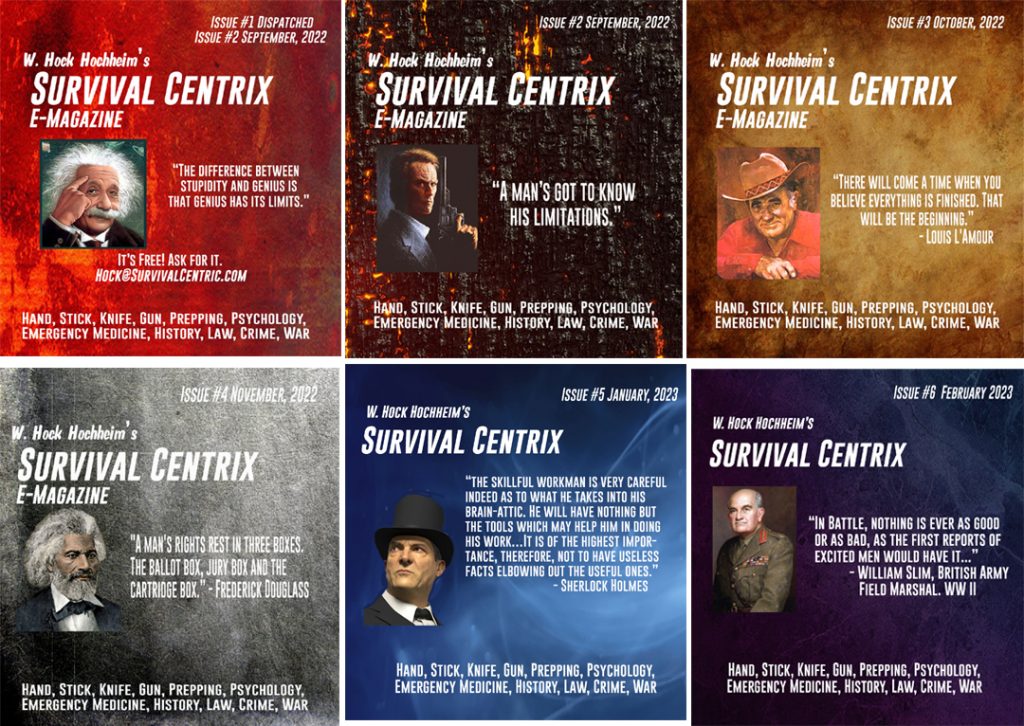
Decades ago, I was working out with karate expert friend, and I grabbed his arms. He’d never been grabbed like this, and he had the epiphany-realization in that moment he needed grappling. But he then started years of Judo. But, this was yet another sport-art. They are both sports-arts. Combining them is still two isolated segments of sports-arts, each deficient in their own categories. Adding and doubling, tripling up on more sport-arts atop each other is not going to best solve the survival problem. It complicates it. It distracts it. It needs blending, not adding.
I see a lot of Mixed Martial Arts being taught and spread. This morning I saw a school advertisement for a “Boxing and Ground fighting” school. Their attached photos show official sport “boxing” and official sport Brazilian wrestling. I get the idea that the advertisers, as well as the customers must think…
“Wow! That’s so complete. I’m getting both.”
“Ready to be attacked by any and all!”
Combatives is supposed to be above all this isolation. But, once you accept the combatives mission-mindset you are faced with the next problem. Collecting and cleaning up the material, material that mostly comes from sport-arts! And you must possess the “martial IQ” to evaluate the material. This process is not as easy as it sounds. It needs blending, not adding.
Try if you must, there is still much sport leakage around. Even in some Krav Magas – present supposedly as a final cure for sport leakage, but I still see…sport leakage, naively, accidentally falling back too far into sport-art. Instructors are often brainwashed from their old art-sport systems. They still think and solve within their brainwashing when there might be a better, faster, unbiased way. Hey, I still find more of this cleansing about every week – “Why am I doing this when I should be doing that.” The process never ends.
Some things the “Ws and H Questions” for you to ask and answer…
* WHO are you?
* WHO is the instructor?
* WHO do you want to become?
* WHAT are you seeking exactly? Precisely?
* WHAT – is there a better, faster way?
* WHERE do you go to seek your result?
* WHEN have you really found the “it?”
* HOW will you find “it?” How do you or he dissect “it?”
* WHY are you motivated to try?
“Learning different martial arts is pretty much useless in modern MMA. It is now its own sport and anyone interested in learning MMA would be much better served to join an actual MMA gym. Learning separate martial arts before starting MMA would be, quite frankly, a waste of time.” – Sprawl CO.
Modern MMA as we see in the UFC etc, is the closest art-sport you will get to reality. But you still need to add weapons, cheating, delete safety rules and weight classes and worry about trying all the moves of these full time, young professional fighters. I’ll bet you are not a full-timer, young professional fighter-athlete – 99.99999% of us are not – so you probably can’t and shouldn’t try to do what they do.
(And of course people have hobbies and they want to pursue their hobbies for a variety of reasons. They should answer those questions, know what they want to do and its limitations. I just ask, do they know what they are doing? If so? Hobby, hobby, hobby on and be happy!)
____________________________
Get the collection of essays found in Fightin’ Words. Click here

 There are so many examples of this routinely happening. We are probably all familair with misguided use of martial material applications. Look at the May, 2023 case, poor, well-meaning, former Marine case on the New York Subway, choking a crazy guy accidentally to death. Recently again in May, 2023, a woman was attacked by an immigrant in Denmark, an attempted rape. As he tore off her clothes, she sprayed him with pepper spray. Now she is under arrest for illegally carrying pepper spray! The rape suspect escaped. Too many examples to list.
There are so many examples of this routinely happening. We are probably all familair with misguided use of martial material applications. Look at the May, 2023 case, poor, well-meaning, former Marine case on the New York Subway, choking a crazy guy accidentally to death. Recently again in May, 2023, a woman was attacked by an immigrant in Denmark, an attempted rape. As he tore off her clothes, she sprayed him with pepper spray. Now she is under arrest for illegally carrying pepper spray! The rape suspect escaped. Too many examples to list.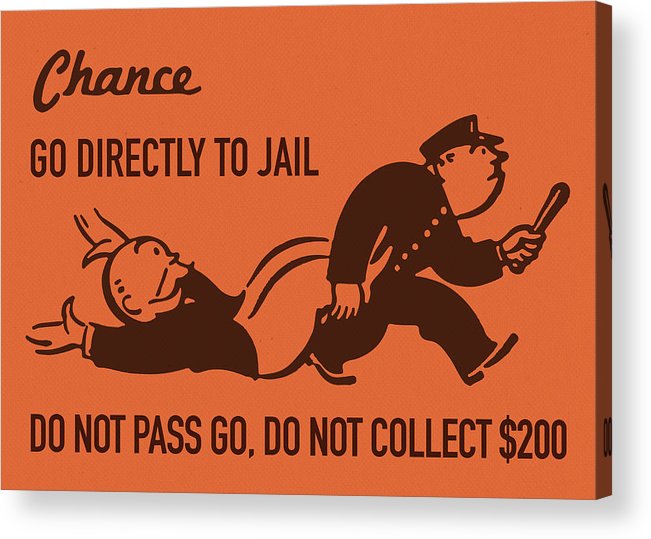 When challenged in court, your system-art will be examined. This does come back to the “What” questions. An instructor-practitioner of any art or system has this responsibility and should answer these “What” questions.
When challenged in court, your system-art will be examined. This does come back to the “What” questions. An instructor-practitioner of any art or system has this responsibility and should answer these “What” questions.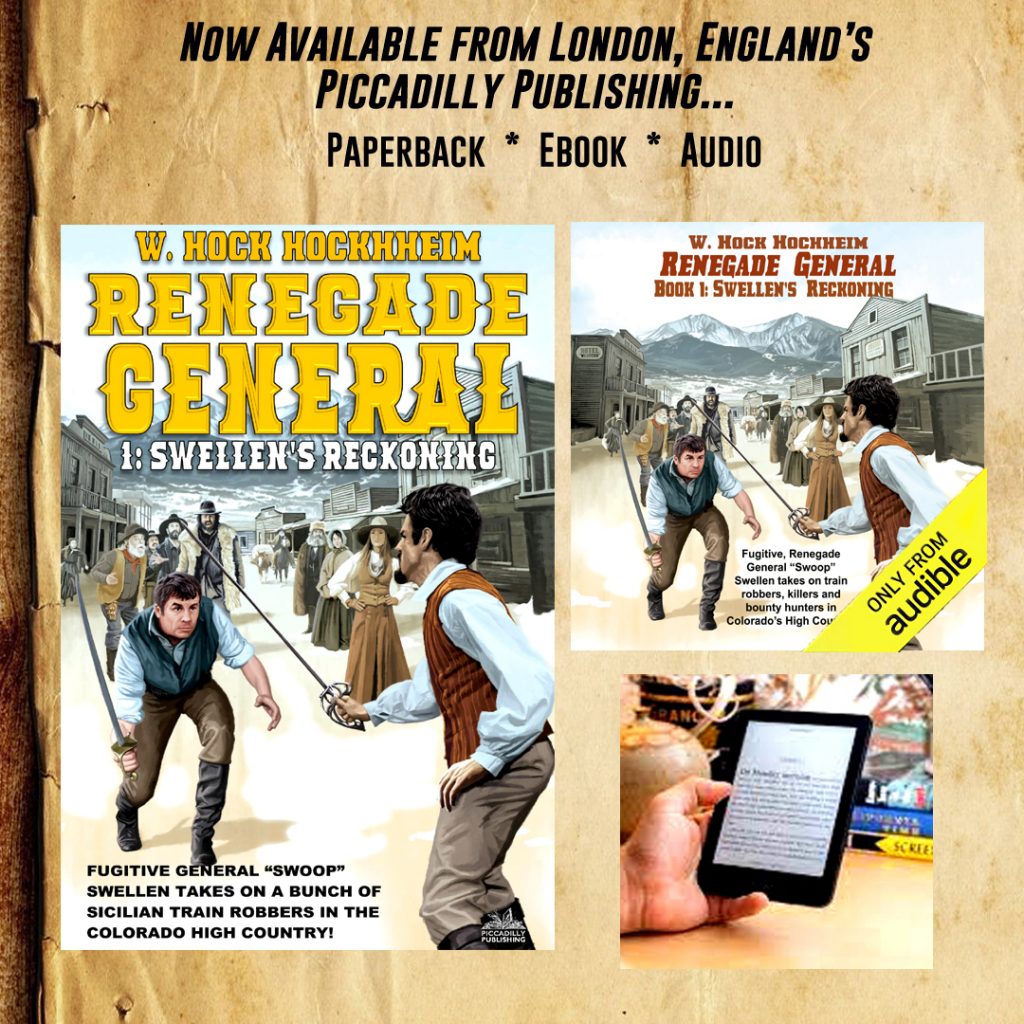
With advancing age and advanced age, one’s reliance on “kuraty” wanes. Someday I know I will be limping around with only my snub-nose, hammerless revolver in my jacket pocket as my only and last resort, despite all the years of training. And what of those who’ve never done any “kuraty?” These inevitabilities make one think about handy support, self defense weapons. Like the small handgun and one might be…the mysterious, intriguing…blackjack.
Andre Wong of Police One defines: “The sap, slapper, or blackjack is a heavy leather pouch, eight to twelve inches long, filled with lead and sometimes a flexible steel rod. Unlike a baton, a sap’s size and shape allowed it to be concealed inside an officer’s pocket. Saps may not look as intimidating as a gun or a baton, but thinking they’re not dangerous would be a mi stake. A sap is dense enough to break bones when the user has room to swing, and the leather edge is rough enough to cause a dull, ripping laceration to the face when used as a jabbing instrument. Slappers would be ideal for use in ultra-tight quarters like a fight on the ground against a large suspect.”
I noticed a number of folks selling and teaching these tools of late. And numerous training videos. I see a lot of artistic, photo displays of weapons on Instagram, and most include saps laid amongst knives and pistols, etc. Given the laws of most states in the USA and countries around the world, I am not too sure you want to be “caught” carrying one, or using one. I am not too sure many of these teachers, photographers or makers have ever used a blackjack in a fight? Not that, that is a mandatory rule. Smart people can invent and teach smart things. Or, have they considered the vast legal ramifications of wearing and using a blackjack?
The law? Here’s just one example, from the People’s Republic of California and the many states that swap legal weapons lingo: California Penal Code 22210 PC makes it a crime to manufacture, import, sell, give, or possess leaded canes or batons (or other weapons in this category). The offense can be charged as a misdemeanor or felony. A conviction is punishable by up to 3 years in jail or prison. A leaded cane is a: crutch, staff, stick, or rod (later defined as any blackjack) that is weighted with lead so it can be used as a weapon. The statute also applies to short and weighted objects that can strike a person.”
Okay! Then, well, so much for California. You heard it’s illegal, but it sort of “brings it on home,” when you read the actual laws. I fail to see the word illegally “teaching” in there, though. Exponents, fans and sellers say that in most states you can own one (at home), but warn not to carry one or use one. ETSY sells them as “novelty paperweights.” Others advertise them as “change purses with stout handles,” with coinage inserted via a zipper on the striking end for weight. This fools no one.
Police carry. I was officially issued and carried one in Texas policing for many years in the 1970s and mid-1980s, though I rarely hit anyone with it as I was trained and training in empty hand systems so much, I used that first and foremost whenever I could. I noticed that others less trained, whacked the crap out of people with them. I have seen people stunned and knocked out by them, and upraised fists smacked by them – instant, significant reaction. In the U.S. Army Military Police and in Texas we were also issued batons, which again, I didn’t actually use much, though rules were pretty “stick-free-wheeling” in the MPs. (We were even taught to quick-search a body with a stick, rubbing it all around the potential weapon-carry spots, which now…would probably be considered rape of some sort.)
Where did we tote that thing? Believe it or not, in the golden, olden days, usually in our back uniform pocket! Able to be easily yanked out by any miscreant! In my small world I’ve never seen that happen, although stats tell us that lots of resisting people did and do like to grab our stuff and it has probably happened. I have had some attempted gun grabs (one on the ground) and handcuff grabs. Some uniforms had sewed-in sap pockets on the thighs. I hear that some uniform companies still add these “sap pants pockets” (costs more) as a matter of routine…but remain empty.
Empty? Many police agencies, mine included, decided one day in the 1980s to collect up all the blackjacks and hide them away in dusty closets. Night sticks also slowly de-evolved into expandable batons, then for many agencies all “sticks” also completely disappeared (along with those BIG flashlights).
Blackjack Training Issues and Problems. I sometimes consider slipping a “Blackjack Module” into my Force Necessary: Stick course, because it is an impact weapon. I often consider too, changing the name of Force Necessary Stick, to Force Necessary: Impact Weapons. But, it doesn’t “sing” so well as the core, four single nouns, “hand, stick, knife, gun.” Imagine that added, elongated song title of nouns –
“Hand, Stick-Flashlight-Blackjack-Sap-DanBong, Knife, Gun.” That makes for a long album cover name. Even adding the term “impact weapons” replacing the solo word “stick” rambles on, “Hand, ‘Impact Weapons’ (instead of just ‘Stick’), Knife, Gun” is still too long for me. It is hard to replace the simple, message “impact” (yes, pun intended) of single-syllable caveman, “Hand. Stick. Knife. Gun.”
With blackjacks I have other reservations other than just too many syllables and nouns in the title. Mostly those weapon laws, yes, and then “supply and demand” problems. First off, they are illegal to run around with almost everywhere to begin with, lest of all a box of them. But then so are samurai swords and that hasn’t stopped classes on them! Just don’t walk into a Walmart wearing a katana. People like to study all kinds of stuff from esoteric to practical.
If I taught the sap subject, I would need to travel worldwide with a supply of, a bunch of actual saps or training saps at seminars for attendees. 
In my world I’d need like…25 or 30 of them. And do you now much stuff I already fly with? Boxes of stuff. Why so many? There’s not much worse than having a specific, weapon-topic seminar, or a session within a seminar, showing up and no one or almost no one has that specific training weapon. I could tell you stories. You are talking to a guy who’s been stopped in Australian airports because I had a box of wooden pistols. What safety, look-a-like, substitute could I fly and drive around with such a box of stuff, that would be blackjack-like and yet, not get me tossed in TSA or the local hoosegow for illegal weapons? Just one real one in my luggage or to and fro the seminar could be legal trouble.
Making the blackjack subject matter a mandatory part of the FN:Stick course, makes these support accommodations on me mandatory too.
The padded knife-dueling tool shown here is an option but it is not perfectly shaped, removing the nuances of the weapon. (This is also a knife problem when trying to emphasize the knife’s edge with a rounded replica.) And…no strap! You have to experience the scenarios with the straps-lanyards.
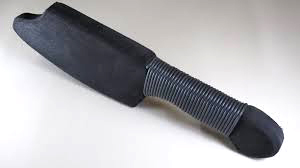

Fad or Fad Not? In the big picture, I suspect that the subject matter is a fad. I am not a passing-fad-boy. And, I don’t mindlessly replicate fads or fad makers. Fun, but a fad and at this point, I can’t see it as much of a big, crowd-drawer or a big, crowd-pleaser in the big picture of the so-called “civilized world” – in that the damn thing is illegal most everywhere. Of course, I could be wrong and blackjacks and saps might sweep the globe. And in a “free state,” if asked I guess I would cover the topic.
Despite the legal hassles, still the lore and the look of these little scrappy, tough bastards are intriguing enough to stay alive for “free staters,” collectors, gawkers, historians and self-defenders.
__
Hock’s email is Hock@HocksCQC.com
Subscribe free to Hocks Combatives TV, youtube channel and watch free, full-feature training films, 11 free films a year, about one-a-month as our elves like to take Decembers off for the holidays. Click here.


It’s always fun and exercise to mix and match martial arts. I did it for years too. Rather…mindlessly too. I knew it had abstract benefits for reality, and frankly, mix and match was good for my school business and student retention (1989 to 1997). And we all know doing just about any martial arts is certainly better than sitting on the couch. But I still only “kept” what I could to glean in the “what works” essence for police work. Fifty years later, this filtering is still an investigation I am addicted too. I still find little and big things to alter and totally remove.
But some things I knew right away, decades ago were “street-wrong.” Like a few “boxing glove cancers” for one of the categories of no-no’s. Those big gloves change things. This photo above, below and those like them, just drive…me…crazy when I see them. This one above is obviously a police training session. Could be a rookie academy or an in-service class. They are mindlessly replicating a sport, face-cover from boxing as a routine stance. Police, military, combatives and self-defense people should not be exactly, mindlessly emulating boxing, (wrestling too), sports or arts as a doctrine principle for crime and war, survival fighting. Each martial, application-blend needs to be investigated.
This “PAB” – Peek a Boo does not protect your face without big gloves! In crime and war survival, not this peek a boo. It’s a boo-boo. Don’t believe little ol’ me? Then to support my observation of common sense I will use two recognized authorities on two points, 1) no protection, and 2) distancing.
Arms and hands can move very fast, and people might overcome a myriad of strategy mistakes with sheer speed. But, fast hands are not an excuse to teach thoughtless, off-mission, doctrine.
Many reality systems, retreat to a doomsday position and protect their heads with forearms WHEN NEEDED. It is NOT their full-time, formal fighting stance. They retreat momentarily into it.
(A quick, protective forearm beside your head when needed is NOT a “turban block wrap.” Don’t get me started on these mandatory, “turban-arm-wrapping-head” systems. Another topic for another time.)
Allow me to go one step deeper here in this subject. Are fooled by PAB? And do you think it’s dominant in MMA and Bare Knuckle Boxing (BN). By being fooled, I mean, if you train in a sporty-art system that emphasizes the “peek a boo,” and you see an opponent, a criminal or whatever take up this or any tight face cover pose in front of you, you might be brainwashed into thinking, “Oh darn! That guy is ‘covered,’ I can’t punch him,” from much big glove training. Actually though, he is not safe. Punch those hands right on or around his face as though his hands are not there (yes, yes, palm strikes and hammer fist too. Yes.). Be like Bass!
PAB is Dominant In….? Once in a while I see a slippery, anomaly comment that PAB is dominant in MMA and BN. Huh? PAB is big glove boxing, method-idea. Just because MMA and BN fighters have head movement, footwork and high hands does not define them as PAB, And I don’t think that with small MMA gloves positioned right-on-face, PAB is a big consistent and dominant in MMA. Plus in MMA many worry about kicks and takedowns, low stuff, and dismiss PAB as an important MMA strategy. Curiously, one of the biggest, related questions searched on the internet is “Why don’t more fighters use the peek-a-boo style in MMA?” Suggesting that it is not a dominant strategy among the interested masses “out there.” Pro-side, PAB-ers usually lose the follow-up, discussion.
So what about bare knuckle boxing? I have seen the PAB term mentioned once in a while by some, claiming that such-and-such BN-er is a “PAB-er.” As with MMA, when you look at their films, no, their hands are just…high up, sometimes one in, one out, both sometimes out, sometimes open and “cupping” the outsides of their face, NOT routinely plastered on their teeth as a foundation. In MMA and BN, all use head movement and footwork, also ramparts of PAB. Hands in fights need to, should move in and out, up and down. And, hands in motion are tools of deception.
In summary. Which leads me to the “who, what, where, when, how and why” questions and doctrines. Are you teaching-doing sports or reality? As I said, it’s always great fun and exercise to mix and match martial arts. But beyond fun and exercise…what is your real mission? Are you making the mistake of mindlessly mixing sport-art things up with survival? What are you trying to do?
Boxing-boxing is just terrific. Jab, cross, hook, uppercut, overhand. Terrific. But are you, missing the “big glove point,” over-using boxing? Are you as an instructor, practitioner of police, military, combatives and self defense systems…are you creating and-or enforcing the best doctrine for your mission? I just groan EVERY time I see this bare knuckle version of the gloved PAB stance. It actually hurts my soul! I groan. Bass Rutten, just…just smiles. For him? It’s…lunch.
Hock’s email is Hock@SurvivalCentrix.com
Every competent person, every competent organization has or should have a refined “mission statement.” It’s where you start. Like so many operations, and in a training company like mine, the mission statement is how you build and direct doctrine, avoid dogma, confusion and even hypocrisy. People-companies within their sphere must seriously define, the – “what we do.” One way to really help define what you do is to also seriously define what you won’t-don’t do.
Mission Statement Consequences? – Keep in mind, there will always be both good, planned consequences and unintended (bad?) consequences. Be flexible enough to make sense of things, changes and challenges.
In the 1990s, interested only in the generic, mixed-weapon world of hand, stick, knife and gun, self-defense survival (and enforcement-security), I decided to refine my Force Necessary mission statement to also explore what I don’t do, what I cannot make, and what I would not produce. This is a truth-and-honesty mission statement for me and for my “customers-practitioners.”
By simply understanding won’t you are not, you are not trying to limit yourself, you are trying to be realistic and stay…on a mission. The “no” reasons, the “why,” for each topic listed below might take a few lines, a paragraph or perhaps in some cases a book chapter to explain, but not a whole book to explain. But, no such details are pontificated here for a such a short essay as this.
A martial arts customer-practitioner needs a mission statement too and most NEVER-ever have. They just walk into schools like “dumb and dumber,” looking for things that the school doesn’t offer, that they saw in a movie last week. Revealing your different reality doesn’t always fit with the join-up, lobby sales-pitch.
Just in the teaching business with a school? Exist in that classic 5-square mile, demographic in a hunt for customers? You are at ground zero. As school-owners, don’t follow me and my “don’ts! Remember I have no school, my market is different, so don’t mimic me. Keep the kids and the uniforms and the dragon posters! Stay alive! And look, many people “change hats,” right within their diverse school. Then you should have a mission statement for your karate class, one for FMA or BJJ class and any other mission-hat-statement for your self defense class. I do want you to be happy and healthy, pursue your interests and hobbies and be successful. If you are happy? I am happy. But you still need appropriate mission statement…hats. It’s all a hat trick!
There is a not-so-old expression (and at my age I know what an “old” expression is) the new kids call – “staying in your lane.” What you are not, helps you understand what you are and helps you stay in your so-called “lane.” (This is true of life in general too.)
But for me exactly? If you are questing for the above traditional, sport and art goals, I can only quote Bob Dylan,
“It ain’t me babe, no, no, no, it ain’t me babe, it ain’t me your looking for babe…”
______________________________
Hock’s email is Hock@SurvivalCentrix.com
Watch free, long training films at Hock’s TV Channel, click here
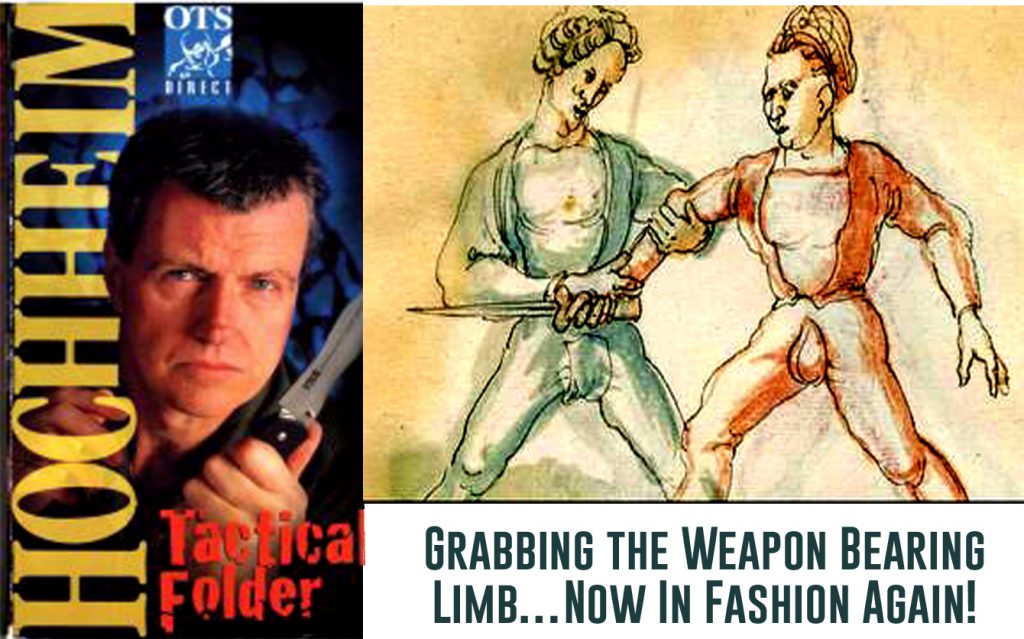
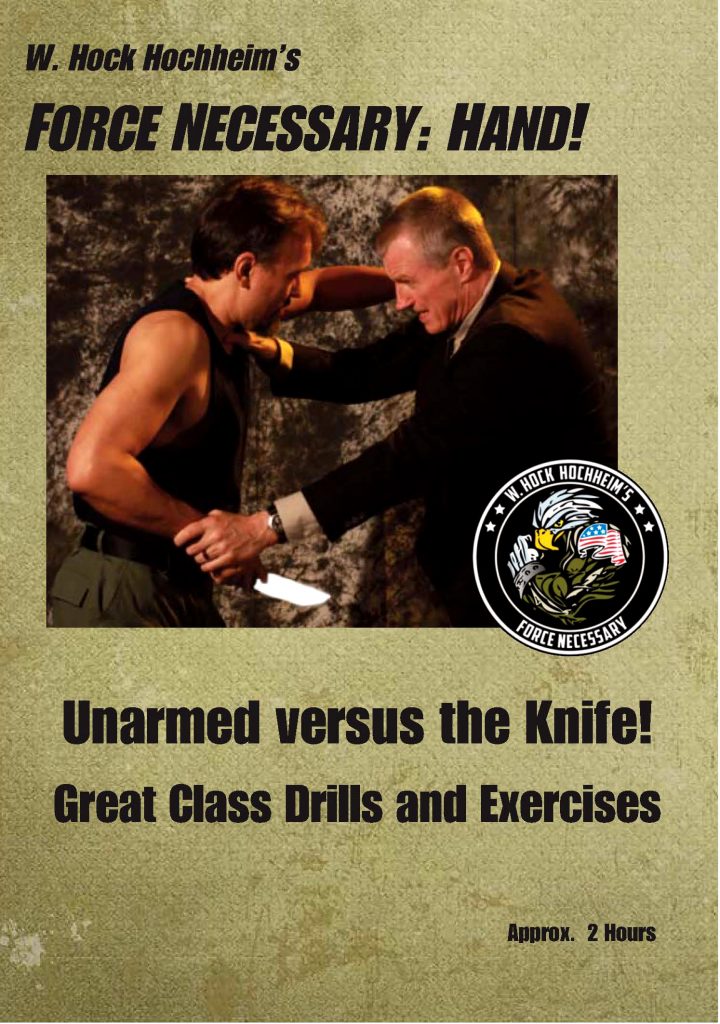
My last two years in the late 90s I wound up back in patrol (I was a real “Adam 12” dinosaur patrolman from the 70s) resurrected back into uniform after some 17-plus years as a detective.
All thanks to some upper-management, “flip-the-applecart” plan. (Lets make the foot-doctors into heart-surgeons and heart-surgeons into foot-doctors.) So, after catching a hitman and filing 12 organized crime cases, I found myself on midnight shift patrol one day, or should I say…night. I had some fun, yes, did some stuff, yes, but it really was a waste of time, grade and experience for me and the flipped others, AND the citizens who rely on expertise.
I had enough military (Army) and quasi-military (policing) in me, to “buckle-up,” “shut up” and go where they sent me. I never once took a promotional exam, (military police or Texas police) wanting to remain in line operations in patrol and investigations. Maybe I should have though? To thwart numerous, deskbound, admin, idiot ideas?
Some of my friends took these tests and remind me they created some ideas for effective change, But me? I was selfish. I wanted to catch criminals, and I spent a blissful 17 years as, what many use to call, a “lone wolf” detective. I was-not, am-not a socially driven public servant by today’s standards, turning and improving agencies into pubic-happy-machines or solving big problems. I just wanted to work cases. Selfish – I confess I used victims as vessels to wrap my hands around the throats of criminals. I mean, I wasn’t rude or dismissive of victims, but I new my mission. Thus, I am-was a dinosaur.
There are numerous stories about why I eventually retired in the Wolfpack Publishing book with their exciting title Kill or Be Killed. Nowadays, I tell all my police and military friends to NOT be like me. Take tests. move up. Build financial security. Build your family. Yours and their future. Don’t remain powerless, bottom-rung, cannon fodder like I was.
_________________________________________
Hock’s email is HockHochheim@forcenecessary.com
Get this ebook, paperback or collector’s hardcover edition, click here
In very generic terms, and with you as the “tosser-thrower-tripper,” in the old-school business of “taking people down,” it would be worthy of mentioning, worthy of thinking about, these two kinds of takedown categories.
There’s one group of methods were you crash down on the ground with the opponent. The other group is when you chunk the guy down and you remain “up,” as in standing, or at least knee-high.
With the first group, there are way more takedown options, including way easier and even sloppy options for when both of you just crash-tackle-fall to the ground together. Actually, almost any idiot can do that, as witnessed in the world of yesterday and today.
With the second “stay-up” there are less options (and more skill) with remaining “up.”
I had to handcuff people most of my adult life when I fought them. In my professional life, on the sidewalks and streets, rocky roads and the tile floors of life, I always tried to be up, or somewhat up, trying for the knee-high or standing results rather than the full-out, ground-wrestling-around results. Once fully down-down, a whole host lof extra, messy things can happen with size, strength, adrenaline, weapons, etc…
I say “try” because sometimes the “toss-er” often falls anyway along with the “toss-ee” from the crazy “asses and elbows” mess that is a “fight.” And if things got rowdy with the “toss-ee,” if and when I got them down, I would try to sit on them, squeezing in on their beltline-pockets (weapons) area, in what was once called “Top-Side Saddle” or “Reverse Top-Side Saddle,” if he was face-down, as in “reverse.” The new, cool kids call it the “mount.”
So at times, I got way down there too, lower than “saddling.” And I had to flat out tackle people due to positional and situational circumstances. In this “ground zero” world there was a short, effective, old school bag of police tricks I was taught, (that including hitting) and I get to show this bag in some seminars when the topic comes up. They do work! And in some cases I had to to choke them out a few times. Nowadays chokes are pretty much taboo in almost all police ops, but okay for civilians if reasonably justified.
It might be worth it, to make a list of the easier, “2-man, crash downs” takedowns and the lessor, harder, “stay-up” takedowns. List and experiment with them. Or, at very least know about the two “ways” and that they exist.
Check all all the materials, click here
What does having an epiphany mean?
For me, in martial-combatives studies this is quest for that somewhat, magic moment of a new understanding and progress.
Lots of people are addicted to their martial sport or art and for many good reasons like “tribal” friendships, exercise, goal achievement, etc. and they become purposely or naively entrenched in what they do. Which is fine for them, providing they understand what I just said. Where it all fits. But, however, if they were like me years ago, doing all those things, and STILL frustrated, it is a problem. I worried, was I on “on mission” or “off-mission?” I was a soldier. I was a cop. I worried about the real world of crime and war, not martial hobbies, not arts or replicating systems.
One day in the mid-1990s, I “awoke” with a big epiphany. As I have written here about before, and I went from “mixed-up” martial arts to “mixed martials.” That is what I realized, what I wanted and needed, my real “on mission,” pursuit, which in my case was the maximum, total blend of hand, stick, knife, gun (“gun” as in pistol and long gun).
Following this big epiphany, came smaller ones, like these examples:
Example 1: Finding single skill drills that work with hand, stick, knife and gun. Or as many of the 4 as possible.
Example 2: Searching for things as simple as possible, yet allowing for as little complexity as functionally possible.
Example 3: A format for individual tactics like…kicking. Take the simple front snap kick (to the shin or groin) Do it –
So, just a simple snap kick? Yes and no. Total use. Of course, all of these have nuances, and it takes a veteran martialist or a smart mind to develop, fix and alter. I still have to teach separate courses for hand, stick, knife and gun.
The simple universal formula of:
Most people want to “do their thing,” follow their isolated interests for the reasons listed way above, which is fine. I still have to teach separate courses for hand, stick, knife and gun. I am paid, like a job, to make customers happy and cover these subjects separately. But my real interests lay in the big, generic quest of the blend. This blend pursuit is more important to me, and not at all important to most others. Which is why I will never become so-called “famous” in the martial arts world. I am an outlier. In fact, most people won’t even read this.
There have been movements to martial blend, as in some Krav Magas and Combatives. Certainly handy and productive, but I think many do so without a formula foundation, and therefore with just collections of random sets of things thrown together. Or, the instructors cannot escape their root martial arts, like BJJ or boxing, and overdose their outlines with sport, mini-failures in reality, which leads us back to the “Mixed-Up Martial Arts” world,
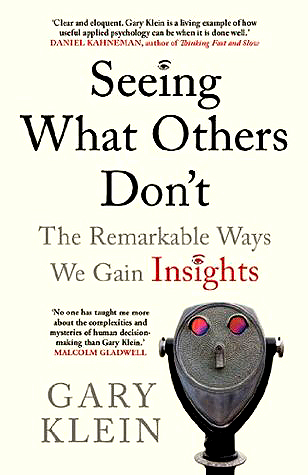
How does the quest begin? Inventor Charles Kettering suggests, “A problem well-stated is half-solved.” I de-construct all problems by investigating the “Ws and H.” Who, what, where, when, how and why questions. This helps me. Helps you?
Discoveries change the world in many big and small ways. Search for epiphanies.
_____________________________
Hock’s email is HockHochheim@ForceNecessary.com
Check out more, click here
#garyklien #epiphany #charlesketterly #combatives #martialarts #martialartstraining #kravmaga #preparedcitizen #counterbladetactics #PoliceDefensiveTactics #defensivetactics #selfprotectiontraining #selfdefensetraining
A Bigger Picture. In the martial arts world, stick versus stick fighting is most closely associated with the Filipino Martial Arts (FMA). A huge chunk of many FMA systems is indeed about the stick-versus-stick duels-events.
(Using-hitting a stick is an easy and fast training target, as with developing the smart fanning strike shown here – the abaniko. This is not necessarily learning how to stick duel, but rather learning to strike with a stick versus anybody with or without anything with a one-two-there fanning spin.)
To establish my opinion here, I remind that I have spent decades in FMA and decades in very generic combatives. Some people around the world think I am knowledgeable on the subjects, so here goes.
The best FMAs I’ve found spend equal amounts of time in what GM Ernesto Presas defined as “the 5 major areas of play” –
Equal time for the five? I find that some FMAs spend disproportionate amounts of time with sticks. Just look at all the group photos of FMA seminars. Everyone is always holding sticks. Sticks, sticks, sticks. Sticks have become the avatar for FMA. Sure it’s fine for some hobbyists, addictive even, whatever, but I “stick” with the Ernesto Presas “Big 5” format.
I am so often reminded of the classic Ernesto Presas quote, “The cane is the extension of the hand,” suggesting that the hand comes first. Dan Inosanto, so often pegged an a consummate FMA-er always does a plethora of other arts than being stick-centric. Too much stick gets FMA redefined to the “stick-only art.” It ain’t! It’s so much more.
Is this dueling calculus necessary in the real world? Through my decades of policing, training, cases and rather obsessive research, I have personally run across a few impact weapon “duel-related” battles like drunken, softball bat fights at tournaments, or crowbar versus tire iron fights. Things like that.
Stick dueling.Otherwise No. Almost all of us are highly unlikely to get into the proverbial 28” stick versus (coincidentally?) another 28” stick fight in a real world, dueling “street fight.” A study of the stick in common self defense should not-would not be centered around a mirror-image-fighter, stick-versus-stick dueling material. Secondly then, all this stick-trick trapping after longer range contact? No. Not this much. Obsessing with stick dueling and stick trapping should be relegated more into a category of fun, art, sport, hobby or exercise, with only abstract benefits to self defense.
While dueling helps various abstract attributes, there are indeed smarter things to do, to prep for a fight in crime and war. When you remove stick-versus-stick dueling and the calculus of stick trapping from FMA systems, there is so much less to worry about and train for survival. While It is vital to FMA, but even in FMA, there is always other stick things to work on like stick-versus hand, stick-versus-knife, even stick-versus-various, gun threats. Now we are looking like self defenders.
I am asked to teach FMA with some frequency and I do so with a great big smile as it is one of my fun interests, but I always make this quick lecture. As readers know by now, I preach the “mentality, hand, stick, knife, gun, mixed weapon, matrix.” And while my Force Necessary: Stick course must touch a bit on the impact weapon duel – because it has and can happen – in no way do I emphasize it. And a great many folks emphasizing self defense and combatives agree with me on this.
Watch out! These “reality” people are “window-peepers, peeping in your school windows, watching you on Youtube.” quick to judge what you are doing and pigeon-hole you as artsy and off-mission Arnis versus reality. Which leads me to the name-tagging quandary.
For self defense combatives, the trainer and trainee, the work-out partners should still both often hold sticks sometimes. Sometimes? In stick training, it is much easier and faster for both partners to hold sticks for various goals. You do, I do, You do, I do. Ease, target practice and stick blocking to name three.
(Target practice! And you can hit hard. He can learn to block well too In the FMA world other Arnis-Kali things happen.)
So even if you are a self defense, combatives person you might find yourself looking like an FMA-er when both the trainer and trainee hold sticks and appear to be doing “too much stick versus stick” to these short-term window peeper-complainers. But still, dueling is not your real, end mission.
In summary, a few quandary warnings to think about…
Obviously I use an impact weapon emphasis in my Force Necessary: Stick course (details listed below, the self defense, stick matrix,) but I do not overdue the stick versus stick aspect when covering that course. FN Stick looks like this:
When teaching FMA I try to do everything but in equal proportions.
Hock’s email is Hock@HocksCQC.com
_____________________________________________________
Get the Impact Weapon Combatives book, (the new second edition!) Click here


I tell everyone that when I am evaluating a martial move for myself or others, in one filter I consider a two prong question.
Which leads me to the blocking naysayers. Once in a while you will run across an internet expert who declares “you can’t block” in a fight, you have to just wrap your head up with your arms, or your forearms, because it is impossible to block in a real fight or an MMA fight. One such expert actually declared a challenge in a youtube video that that there is NO, ZERO blocking in fights, and NONE in MMA/UFC fights. Just head covers by forearms. He claims that you therefore must ALWAYS opt for a forearm on the head, or some sort of “turban” head wrap as the only option. He dared anyone to send him a film clip of successful blocking.
So, In 15 minutes I found 26 photos (not videos) of successful blocks versus punches and kicks in the “UFC-ish world.” I just don’t care enough about the subject and about him to bother looking up film clips for him. Blocks that worked are failed strikes and are boring. Such video clips (and photos) are not plentiful because blocks are boring and who films and spreads just them? Who takes the time to cut successful block footage into film clips? There are many, many unsuccessful punches, the ratios are high. Rather they film clip and upload, successful and interesting punches, kicks and knock outs. Cool moves are in film clips. Exciting things are made into video clips. No failed ones.
But some random photos tell another story about the success of blocking, even though they are taken and spread inadvertently.
Despite the fact that Bas Rutten, who I trust WAY more for advice, has said publicly and on film multiple times that blocking punches and kicks is an important skill and to ignore people who say otherwise. Bas is not the only vet-champ to say so.
I will continue to teach blocking methods. There are plenty of photo examples of successful, boring blocking in all kinds of fights. There are successful and unsuccessful blocks. I just don’t need someone telling me (and us) to FORGET them all, and erase the idea from training. To me, this is a thinking disorder.

I might add that a few of these turban practitioners have been struck on their hands while on their heads and have suffered some broken metacarpals. Military, martial and police vet Loren Christensen adds, “And head shielding hurts the arms when the puncher isn’t gloved. Get punched bare knuckle a few times in the forearm and one or more strikes a nerve(s), the shielding arm becomes useless.” If it were so wonderful you would see it more among the trained. Most of the time it is not needed, nor efficient. And good martial system doctrine is about efficiency.
Anyway, back to “block-don’t-block,” the main event of this essay. I am a little pissed that I now have to load, one-by-one, some of these successful blocking photos. But, for your entertainment I will include just some of the them as a sample collection to file away in your brain and in your notes, or to show naysaying idiots. I have many, many more such photos. How many do I need to show?
Okay, okay, I’ve had enough loading. I am through. I have many more. But I am through here.
______________________________
Hock’s email is HockHochheim@ForceNecessary.com
Check out these books! Click here

Everyone is different and I work off of the “who, what, where, when, how and why” questions to win and-or survive, and-or problem-solve. The big 4 groups…
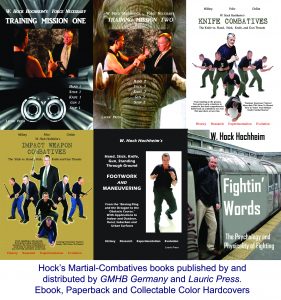
In 1986, I became fascinated by the Bruce Lee’s essay on “the stance of no stance,” idea. Whether hand, stick, knife or gun, I opted for the loose “ready stance,” and the “balance and power in motion” concept, a motion-picture-idea rather than a still-photo-idea.
Thanks to Bruce Lee, the Inosanto Family (and Ed Parker) when teaching since the late 1980s, I organized and demonstrated the Ten Probable Position-Problems to prepare people for the full spectrum of mixed weapon fighting possibilities. I was a cop then and we had to fight on the ground periodically, so even before the BJJ madness-fad, many of us trained in a diverse Police Judo, later re-named Police Defensive Tactics (both very incomplete). And, I was deeply involved with the Inosanto Family and they were deeply involved in “shooto” – “shoot wrestling.”
One might say there are three generics in “street fighting-survival” challenges. 1) standing, 2) kneeling-seated, 3) floor-ground. But inside each there are differing heights and needs, making up the ten. For me a system-art that spends too much time in one of the categories is forgetting the importance of the others. In any fight you may well transition through some of these ten. Investigate them through the Ws and H Questions, the who, what, where, when, how and why questions to best explore combatives. One such “Where” question is…”Where are you?” Standing? Kneeling? Seated? Floored-grounded?
YOU WILL BE FIGHTING “HERE”… In many a fight, certainly an ambush, you might never get a chance to strike up a defined “stance.” Still, this study reminds everyone that fighting includes all these up-and-down height categories and they should not be ignored or forgotten.
EVERYTHING you learn, must be experimented through these 10 position (stance) problems. Every strike, kick, lock, etc…can you do it there? Can it work here? There? Up and down? Yes or no? This is the goal of the seamless survival fighter. You fight where you fight, where you are. A true fighter-survivor, so-called “combatives” person, fights standing, kneeling-seated and on the floor-ground, in and out of buildings, in rural, suburban and urban areas. Dissect, identify and discard sports and artsy cancers. A combatives fighting system is about doctrine-doctrine-doctrine, the training skeleton which recognizes chaos, crime and war and best prepares people to respond.
I ask again, “Where are you?”
________________________
Hock’s email is HockHochheim@ForceNecessary,com
Get these Training Mission, second-edition books in Ebook, oversized paperback and full color, collectable hardcover textbooks. Hundreds of pages of thousands of how-to photos. (there will eventually be about six Training Mission books. Click here
Your Signature Moves and the Pareto and the Mental Model?
Mental models are descriptions of reality that apply across every area of our life, usually don’t get outdated, and provide good results by helping you make better decisions. What is an example of a mental model? One of the most famous and valuable mental models is called the Pareto Principle. Use the 80-20 Pareto Rule to create your signature moves
You probably know it as the “80-20 rule.” This mental models says that most of your results are going to come from just a small percentage of your effort or work.
Vilfredo Pareto, the man who “discovered” this principle noticed that 80% of the land in his area was owned by 20% of the people. He looked in his garden, and saw that 80% of the peas were in 20% of the pea pods. Then he realized that this was something like an organizing principle of life.
This phenomena applies across many domains including productivity, happiness, business, health, etc. Here are a few examples:
You know me, the eternal skeptic, and maybe the percentage might be 18% or 25%? But I do get the overall idea. This model is much more complex and it can be applied to infinitely more, but this basic concept allows you to quickly acquire what counts. In our “fighting world,” just look at the UFC and see what is actually and consistently done, juxtaposed with the total martial arts systems, techniques and methods of the world and history. Who, what, where, when, how and why?
In the “fight world” competition fighters have a small collection of go-to signature moves (and strategies). Opponents study those moves by way of films, personal observations and interviews to win. But what of war and crime? You might say that militaries have overall, signature strategies. But what of defending yourself against criminals? Criminals and the classic bullies have no films to study on you, to prepare for your signature moves.
I am not talking about hobby sports and arts here. Just survival. I would venture to say that you need some personal signature moves that best suit you, compiled after you do an extensive study in the “who, what, where, when, how and why” questions. This is why the cookie cutter, martial arts systems are not the best manufacturers of the survival, self defense product, and they can be very one-dimensional. Thai fight Thai. Boxers box. Wrestlers wrestle with no strikes. Etc. One dimensional, offering abstract skills to deal with the harsh, mixed-weapon chaos of the world. (I might add that I do not like the words “self defense” and “fight” or “fighting,” as they can be misleading and hackneyed when discussing survival. Still, I must use them for the lack of more succinct nouns.)
I resolved this signature concept by insisting that people study to develop their signature moves for their size, shape, strength, age, coordination and predicable situations-and then later, non-predicable situations. It’s the biggest part of the “Who” question.
Some instructors will say “get 5 things.” “Come to my ‘5 Things’ school.” But then they one-dimensionally speak of only unarmed things. What of stick things, knife things, gun things? Five, then 5, and 5 and 5 more? What of standing through ground problems? That’s a matrix of mixed things! That’s a whole lot of simple things. I struggle with this numbers games by seeking the drill/exercises that are multi-purpose. Learn one movement, change the position and weapons. I must be ever vigilant in finding these short cuts for you. That’s my job. My mission.
In the end your signatures are also facing perishability. Will you do these things, say…for the rest of your life? Or, will these signature things slowly erode away. Perishability is another topic for another time, but will your signature become dim and unreadable. And in this vein, let me mention quickly that you need to review your signature moves every 5 or 6 years or so because as you age, you may not be able to execute them as well, or at all.
We fight criminals, enemy soldiers and our “drunk uncles.” I could go on with a lot of anecdotal stories, lessons and name-dropping here, but I think you get the point? Please take a deep dive in the “who, what, where, when, how and why” questions. Exercise and experiment with unarmed and mixed weapons. Collect things for you, yourself. Improve your “Martial IQ” and your “Martial Savvy” with skepticism and awareness. Don’t get yourself, “Martial Sick.”
This is all about YOU. Not me. Not the perpetual-ization and worship of systems and their god-heads. YOU! Get some signature moves for situations.
Sign your name on these dotted lines…
______________________________________
Read more on Pareto 80-20 and life in general
Hock’s email is HockHochheim@ForceNecessary.com
#combatives #martialarts #martialartstraining #kravmaga #preparedcitizen #counterbladetactics #PoliceDefensiveTactics #defensivetactics #selfprotectiontraining #selfdefensetraining #trainforthefight #selfdefense #selfprotection #urbancombatives #kembativzbrand #kembatives #guntraining #knifetraining #unarmed #stickfighting #forceonforce #forceonforcetraining #forcenecessary #forcenecessaryuk #whockhochheim #handtohandcombat

“There is no second round in the street,” might be an old and corny expression for some, but some folks need to hear it once, or once in a while, to get them back on track for what they want, and what they are forced to do in classes and programs.
Attrition is defined as – “the action or process of gradually reducing the strength or effectiveness of someone or something through sustained attack or pressure.” It’s a word used in military battles and war, and here in sport fighting “physical attrition” is a strategy.
In sports, it is indeed the coaches job to map out a strategy to your first or next fight, give you a game plan. You know that in amateur and pro fights, where a history and film exists on your next opponent, these histories are studied and strategies evolve. A properly prepped, fighter, MMA, BJJ, UFC or otherwise needs to walk in with a strategy, a plan. And in this process, the plan is made and you might hear from your coach, “Do this, then do this and this, and the fourth round is yours.” “You…make your move,” Kind of talk. Or ideas about tiring him out in among the battle plan. “First round? Check him out, probe. Probe with the jab. See how he reacts. Second round do ‘this or that’ with the discoveries from your probing. Third round is yours, as you will…”
Coaches say – tire him, move around, also deliver body shots too and kicks too in kickboxing, to weaken and confuse the opponent in round one and round two for the theoretical victory in Round 3.
In one example of body shots, there were numerous successful (and unsuccessful) boxers who spent rounds pounding the upper arms of their opponents so that eventually their guard, through multiple rounds, would eventually drop, their beaten arms down for their eventual, head shots, so that the… ” ______ (fill in the blank) round is yours.”
I think it would be odd for a coach to simply say, “knock him cold with a head shot in the first two seconds. That is all. Now go jog and hit that bag.” Fighters do indeed knock people out quickly, but aren’t they always handed an overall, planning, staging, strategy, etc.? Despite the delaying plans, bingo!
For many fighters, this plan is laid out in the first meeting for training for a specific fight. This fighter then and quite possibly gets this message buried in his head for months, “Third round is mine. Third Round is mine.” Even in the first round, he is fixated on the third round, deep in his head.
This type off delay-progression, advice was advice I had been given for decades by various boxing, kick boxing, and even Thai boxing coaches.
The transition of these delay ideas and advice can get blended over and into, for lack of a better term, “self-defense-street-fighting” courses. Training by short-sighted, self defense course trainers and coaches can, have and will get these borders confused. I was told these off-mission tips at times in several self defense courses that included boxing, kickboxing and Thai methods. For examples:
The “who, what, when, where, how and why” questions arises again.. Briefly, as these questions run deep…
I called these off-mission, missteps – “sport cancers” to be on the lookout for in all transitions from sports to the non-sports world. This is actually quite hard to dissect, especially buried within small steps. Even after 40 years I STILL spot things that I, or we, should not be doing. Enlightened coaches look for these, but I must tell you I don’t find many such enlightened coaches. Many are so immersed in what they do systemically, via their mindset, via hero or system worship or franchise dues, they will not or can’t detect the discrepancies and will not or cannot rebel against them.
“There was no second or third round in the street fight,”…to use a corny phrase. These street fights/arrests I was in and ones I had to break up and later investigate had little time for the experimental probing jabs, trick footwork or secondary blows to wear an opponent down through time, and other “second-third-or-more round,” ring sport, strategies.”
Upon self-examination, be happy with what you do and know why and what you are doing. I want you to be happy in your pursuits.
Physical attrition. We don’t have time for physical attrition. I hate to use the over simplistic term “street fight” because real encounters occur inside and outside of homes and businesses in rural, suburban and urban locations. But these so-called “street fights” were almost always hard, fast, crazy and over quickly. You were bum-rushed, or wild-man-tackled and, or sucker-punched, hit with chairs and lamps, etc…I was attacked once by a man with a big ax. No time for several probing, experimental sport jabs versus the swinging ax man.
Hock’s email is HockHochheim@ForceNecessary.com
^^^^^^^^^^^^^
Get this Training Mission One book here